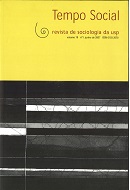Tricks up their sleeves: business strategies in small industries
DOI:
https://doi.org/10.1590/S0103-20702007000100013Keywords:
Institutions, Clusters, Industrial policyAbstract
This paper presents the main research findings of a study conducted in two industrial districts and what I refer to here as Local Industrial Arrangements - LIAs. The research focuses on the transition from a situation characterized by informal or illegal production, low wages and precarious work conditions, to one characterized by high levels of productivity/quality/fair labour conditions. The findings of the empirical study reveal the importance of specific institutions in the transition from a widespread informality to the more stable and sustainable situation of the LIAs. In the case of Jaraguá (GO), it was the legal framework that enabled this change and the subsequent impact on local development, while in the case of Toritama (PE), transition was stimulated by the cooperation between legal and environmental institutions.Downloads
References
ALMEIDA, M. (2005), Understanding incentives for clustered firms in Brazil to control for pollution: the case of Toritama. Brasília, Ipea, abril, p. 54.
CASSIOLATO, J. E. & LASTRES, H. M. M. (2003), “O foco em arranjos produtivos e inovativos locais de micro e pequenas empresas”. In: LASTRES, H. M. M. et al. (eds.). Pequena empresa: cooperação e desenvolvimento local. Rio de Janeiro, Relume Dumará.
CLARO, C. D. (2003), Contratos informais em pequenas empresas na cidade de São Carlos. São Carlos, dissertação de mestrado, Departamento de Ciências Sociais, Ufscar.
DI MAGGIO, P. & POWELL, W. W. (1983), “The Iron cage revisited: institutional isomorphism and collective rationality in organizational fields”. American Sociological Review, 48 (2): 147-160.
GEREFFI, G. & KORZENIEWICZ, M. (1990), “Commodity chains and footwear in the semiperiphery”. In: MARTIN, W. G. (ed.). Semiperipheral states in the world-economy. Nova York, Greenwood Press, Commodity chains and footwear in the semiperiphery, pp. 45-68.
GRANOVETTER, M. & SWEDBERG, R. (eds.). (1992), The sociology of economic life. San Francisco, Westview Press.
GRUN, R. (1992). Negócios e famílias: armênios em São Paulo. São Paulo, Sumaré, Série Imigração, vol. 3.
GUIMARÃES, N. A. (2004), Caminhos cruzados: estratégias de empresas e trajetórias de trabalhadores. São Paulo, Editora 34.
HOLLINGSWORTH, J. R. (2003), “Advancing the socio-economic paradigm with institutional analysis”. Socio-economic Review, 1 (1): 130-134, jan.
LAZARTE, M. E. J. (2005), Successful public sector enforcement of environmental standards in the Toritama Jeans Industry in Pernambuco, Brazil. Departament of Urban Studies and Planning, Massachusetts Institute of Technology.
LIMA, J. C. (2000), “A subcontratação em cooperativas de trabalho no Nordeste: descentralização produtiva e flexibilização das relações de trabalho”. In: ABREU, A. R. D. P. (ed.). Produção flexível e novas institucionalidades na América Latina. Rio de Janeiro, Editora da UFRJ, pp. 255-269.
LOCKE, R. M. (2004), Building Trust. Massachusetts Institute of Technology – MIT.
LOPES, J. R. B. (1967), Crise do Brasil arcaico. São Paulo, Difel (col. Corpo e Alma do Brasil).
MARSDEN, D. (1986), The end of economic man? Custom and competition in labour market. Nova York, St. Martin’s Press.
NORONHA, E. G. (2003), “Informal, ilegal, injusto: percepções do mercado de trabalho no Brasil”. Revista Brasileira de Ciências Sociais, 18 (53): 111-129.
NORONHA, E. G. & TURCHI, L. M. (2002), “Cooperação e conflito: estudo de caso do complexo coureiro-calçadista no Brasil”. TD-IPEA – Texto para Discussão, n. 861, março, pp. 5-42.
OLSON, M. (1999), A lógica da ação coletiva: os benefícios públicos e uma teoria dos grupos sociais. 1ª edição 1955. São Paulo, Edusp (col. Clássicos, 16).
PUTNAM, R. (1993), Making democracy work. Princeton, Princeton University Press.
REYNAUD, B. (2004), Les règles économiques et leurs usages. Paris, Odile Jacob (col. Économie).
SOLOW, R. M. (1990), The labor market as a social institution. Oxford, Basil Blackwell.
SUZIGAN, W., FURTADO, J. et al. (2003). “Sistemas locais de produção: mapeamento, tipologia e sugestões de políticas”. Trabalho apresentado no XXXI Encontro Nacional de Economia. Porto Seguro, BA, 9-12 dez.
SWEDBERG, R. (1994), “Markets as social structures”. In: SMELSER, N. & SWEDBERG, R. (eds.). The handbook of economic sociology. Princeton, Princeton University Press, Markets as social structures, pp. 255-282.
TENDLER, J. (2002), “Small firms, the informal sector, and the devil’s deal”. IDS Bulletin, 33 (3).
TENDLER, J. (2003), “Pequenas empresas, o setor informal e o ‘pacto com o diabo’”. Política e Trabalho – Revista de Ciências Sociais, 19, set.
UFRJ, Instituto de Economia. (2003), O foco em arranjos produtivos e inovativos locais de micro e pequenas empresas, pp. 21-34.
Downloads
Published
Issue
Section
License
Copyright (c) 2015 Tempo Social

This work is licensed under a Creative Commons Attribution-NonCommercial 4.0 International License.


